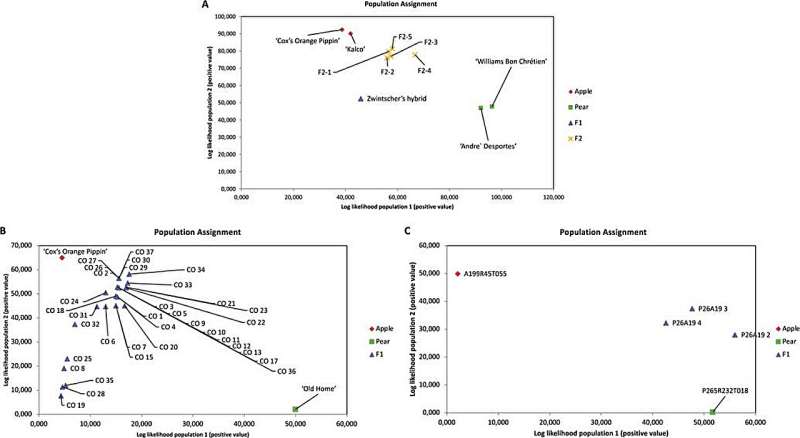This article has been reviewed according to Science X's editorial process and policies. Editors have highlighted the following attributes while ensuring the content's credibility:
fact-checked
peer-reviewed publication
trusted source
proofread
Unlocking the genetic potential of apple and pear: Advances in intergeneric hybrid viability and trait selection

The Pomoideae subfamily includes nutritionally valuable pome fruits like apples and pears, and their genetic diversity is critical for the enhancement of fruit crops. Current research has made strides in intergeneric hybridization to amalgamate traits such as flavor and disease resistance but is hampered by the hybrids' viability issues.
Initial successes, like Zwintzscher's Hybrid, are limited by low progeny survival, particularly when pears are served as the female parent. Given these challenges, there is an urgent need to establish viable intergeneric hybrids between apple and pear that can sustain long-term survival and fertility.
In October 2022, Horticulture Research published a perspective titled "Molecular characterization of intergeneric hybrids between Malus and Pyrus."
In this study, researchers employed simple sequence repeat (SSR), high-resolution melting (HRM) analysis, and single nucleotide polymorphism (SNP) array genotyping to comprehensively analyze intergeneric hybrids between apples and pears. SSR genotyping across 34 markers identified 21 and 30 informative markers in two different populations, confirming Zwintzscher's Hybrid as a true F1 intergeneric hybrid.
The hybrids clustered between the apple and pear parental groups, with F2 progeny leaning closer to apple. Similarly, HRM analysis of 155 markers revealed 39 informative markers, the same evidence for hybridity of the five Zwintzscher's Hybrid F2 progeny. SNP array genotyping using the Infinium II 9 K SNP array showed 1,090 polymorphic apple SNPs within the CO progeny, positioning the hybrids intermediate to the parental clusters.
Through SSR and HRM genotyping, the analysis revealed a high degree of genetic diversity in these populations, with SNP data strongly supporting hybridization.. Metabolomic analysis complemented the genetic assessments by examining metabolite accumulation. Zwintzscher's Hybrid and its F2 progeny accumulated metabolites from both parent species, with a higher concentration of apple-derived phloridzin. This trend continued in the CO and PFR populations, again favoring the apple parental traits.
Finally, fire blight resistance assessments showed that all CO hybrids exhibited resistance, with a notable improvement over the apple parent. The P26A19 progeny displayed varying degrees of resistance, with P26A19 4 showing high resistance, akin to the pear parent, and P26A19 3 was susceptible, similar to the apple parent.
In conclusion, this study has successfully employed comparative genomic approaches to distinguish genetic variations in Malus and Pyrus hybrids and their F2 progeny, confirming the efficacy of SSR, HRM, SNP chip analysis, and metabolomics as tools for confirming hybridizability.
The study also examined specific metabolite profiles and fire blight resistance, providing a foundation for marker-assisted breeding. These advancements promise to expedite the development of new fruit varieties with enhanced qualities for both growers and consumers.
More information: Giulia Pasqualetto et al, Molecular characterization of intergeneric hybrids between Malus and Pyrus, Horticulture Research (2022). DOI: 10.1093/hr/uhac239
Journal information: Horticulture Research
Provided by NanJing Agricultural University





















